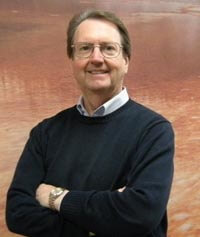Meet the Team: Dr. Scott Hubbard
February 5, 2015
Dr. Hubbard’s Bio:
 Scott is a Professor of Aeronautics and Astronautics at Stanford University where he focuses on planetary exploration, especially Mars and also serves as the Director of the Stanford Center of Excellence for Commercial Space Transportation. He has been engaged in space-related research, program, project and executive management for more than 35 years including 20 years with NASA, culminating as director of NASA’s Ames Research Center. He served as the sole NASA representative on the Columbia Accident Investigation Board; was NASA’s first Mars program director and successfully restructured the entire Mars program in the wake of mission failures.
Scott is a Professor of Aeronautics and Astronautics at Stanford University where he focuses on planetary exploration, especially Mars and also serves as the Director of the Stanford Center of Excellence for Commercial Space Transportation. He has been engaged in space-related research, program, project and executive management for more than 35 years including 20 years with NASA, culminating as director of NASA’s Ames Research Center. He served as the sole NASA representative on the Columbia Accident Investigation Board; was NASA’s first Mars program director and successfully restructured the entire Mars program in the wake of mission failures.
Scott is the founder of NASA’s Astrobiology Institute, conceived the Mars Pathfinder mission with its airbag landing, and was the manager for NASA’s highly successful Lunar Prospector Mission. Prior to joining NASA, he led a small start-up high technology company in the San Francisco Bay Area and was a staff scientist at the Lawrence Berkeley National Laboratory. He has received many honors including NASA’s highest award, the Distinguished Service Medal. Scott’s award-winning book titled, Exploring Mars: Chronicles from a Decade of Discovery, describes his work on NASA’s Mars Program.
The Interview:
What do you find most exciting about the Sentinel Mission?
Sentinel presents the opportunity to not only prevent a global disaster but also demonstrate that a deep-space telescope mission can be developed via fixed price contract on a commercial basis and funded through philanthropy. All these elements represent significant “firsts” in the exploration of space.
How did you become involved with the Sentinel Mission Leadership Team?
Ed Lu, the CEO of the Sentinel Mission, and I had known each other from our NASA days. In the summer of 2011, Ed contacted me and said “Let’s have lunch. I’ve got an idea to discuss.” At that lunch, Ed laid out his concept for a privately funded space telescope to detect Near-Earth Asteroids that might pose a threat. His question was, “Is this spacecraft development possible?” That was the beginning of a great relationship.
What would you like people to understand about the Sentinel Mission?
Sentinel will change the world is so many dimensions. The reason the dinosaurs became extinct is that they didn’t have a space program. Not only will we provide the data to protect the planet, but Sentinel will break new ground in the process and methods for creating a deep space mission.
You were the former Mars Czar, appointed to the post in 2000. How does your NASA experience with mission planning and Mars inform your work in a private sector mission to find asteroids?
Creating an entirely new Mars Program out of the ashes of two failures in 1999, was perhaps the most challenging and ultimately rewarding part of my 20 year NASA career. One of my tasks was to strike the right balance between the “faster, better, cheaper” philosophy that led to the failures with the traditional very expensive and cumbersome oversight process. Creating a new discipline of “program systems engineering” has helped prepare me for the innovation need to develop a privately funded, commercial basis space mission.
Tell us about one (or more, if you wish) of the most memorable moments in your career.
Being the last person in the launch poll of Mars Odyssey, the first return to flight after the Mars mission failures. It is one of those career defining moments when you personally hold the final responsibility for saying “Go” in the countdown. There were those who thought the Mars program could not be rescued. Launching Odyssey proved them wrong.
Who are your inspirations?
That’s a good question because my influences other than my parents are a very eclectic bunch. As a young boy I was amazed that Isaac Asimov could write both award-winning science fact and science fiction. I’ve always been impressed by a combination of innovation and excellence – even perfection – of performance. That includes such disparate individuals as Jimi Hendrix, Fred Astaire and Joe Montana. Mostly, though I tend to invent my own future.
What do you like to do when you’re not working on Sentinel?
Currently I have a full-time faculty appointment at Stanford in the Department of Aeronautics and Astronautics where I advise PhD students (and see that they are funded!). That keeps me very busy. However, I also keep playing the guitar at every opportunity. Even after more than 50 years, it’s still fun and exciting.
What’s on your bucket list?
There’s an extended visit to Europe this fall that includes the Cinque Terre, Florence and Venice.
Last question: Star Wars or Star Trek?
Star Trek!















